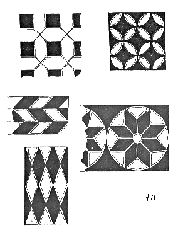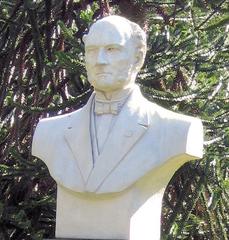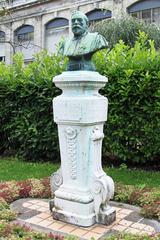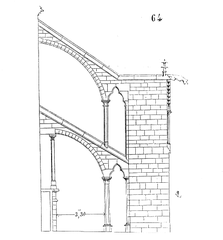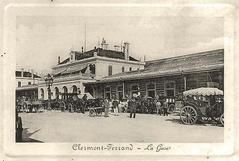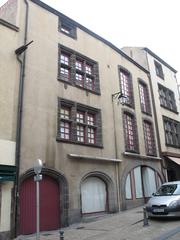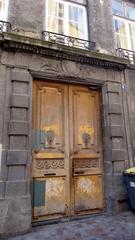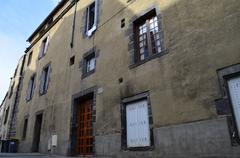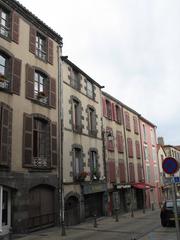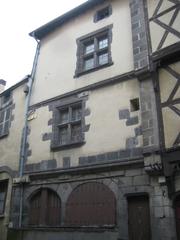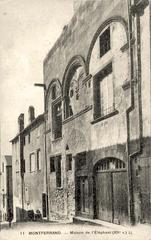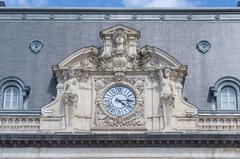Villa Pingeot in Clermont-Ferrand: Visiting Hours, Tickets, and Historical Significance
Date: 14/06/2025
Introduction
Set in the heart of Clermont-Ferrand, Villa Pingeot stands as a subtle yet remarkable testament to the city’s prosperous Belle Époque era. Its distinctive architecture, combining late 19th-century elegance with early 20th-century modernist influences, makes it a must-see for those interested in French heritage, architecture, and local history. This detailed guide provides essential information about Villa Pingeot’s visiting hours, ticketing, historical context, and travel tips, ensuring you make the most of your exploration of Clermont-Ferrand’s cultural landscape.
History and Architectural Significance
Origins and Context
Villa Pingeot, located at 74 rue Blatin, emerged during a period of industrial expansion in Clermont-Ferrand. The late 1800s and early 1900s saw the city’s bourgeoisie commission grand residences, reflecting newfound status and aesthetic values. The villa’s name likely derives from a prominent local family, as was customary for such homes (Mappy; Mapcarta). Its proximity to other stately properties in a district favored by the city’s elite underlines its social and architectural significance.
Architectural Features
The villa is emblematic of Clermont-Ferrand’s architectural identity, notably its use of dark volcanic stone from the Chaîne des Puys. Characteristic features include:
- Ornate stone façades and wrought-iron balconies
- Steeply pitched or mansard roofs
- High ceilings, parquet floors, and elaborate cornices
- Landscaped gardens and decorative ironwork gates
These elements reflect both classical tastes and the evolving styles of the early 20th century, notably with a 1920 expansion incorporating Art Deco influences (Wikipatrimoine; Puy-de-Dôme Méconnu).
Historical Context and Cultural Role
Clermont-Ferrand’s Evolution
The Belle Époque era was transformative for Clermont-Ferrand, with industrialists and professionals fueling urban development. The rise of the Michelin company and the city’s fashionable status drew affluent residents, who built stately homes like Villa Pingeot (France.fr; Clermont Auvergne Volcans).
Villa Pingeot During World War II
Clermont-Ferrand briefly became the seat of the French government in June 1940, and many villas—including those on rue Blatin—were requisitioned for official use. While specific details about Villa Pingeot’s role are scarce, its location and prominence suggest it was part of the city’s wartime social landscape (Deep Heart of France).
Social and Cultural Hub
Beyond private use, villas like Pingeot functioned as social centers, hosting gatherings and salons that shaped Clermont-Ferrand’s cultural life. Today, the surrounding district is lively, with antique shops, galleries, and cafés, continuing this tradition of urban vibrancy (Clermont Auvergne Volcans).
Visitor Information
Location and Access
- Address: 74 rue Blatin, 63000 Clermont-Ferrand, France (Monumentum; POP Culture)
- Getting There: Accessible by train (TGV from Paris), air (Clermont-Ferrand Auvergne Airport), or car (A71/A75 motorways). Public transport links include bus and tram stops at Jaude and République. Limited street parking is available nearby (Choosewhere).
Visiting Hours
- General Access: Villa Pingeot is a private residence and is not open for regular public tours. Its exterior can be admired year-round from the street.
- Special Events: The villa opens to the public during the Journées Européennes du Patrimoine (European Heritage Days) each September, when guided tours of the interiors and gardens are offered (Monumentum JEP; JEP program).
Entry Fees and Booking
- Entry Fees: Admission is typically free during Heritage Days and similar cultural events.
- Booking: Advance booking is often required for guided tours due to limited capacity. Check announcements via the official JEP website or the Clermont Auvergne Volcans Tourist Office.
Accessibility
- Mobility: The villa’s historic layout includes stairs and uneven floors; wheelchair access may be limited. Contact event organizers ahead for specific needs.
- Language: Tours are predominantly in French; English guides or materials may be available during special events.
Facilities
- Restrooms: None on-site; use nearby cafés or public facilities.
- Photography: Permitted during public openings, though restrictions may apply to flash or tripods.
Nearby Attractions
Enhance your visit by exploring other notable sites in Clermont-Ferrand:
- Cathedral of Notre-Dame-de-l’Assomption: Spectacular Gothic cathedral built from local lava stone (The Good Life France).
- Basilique Notre-Dame-du-Port: UNESCO-listed Romanesque church.
- Musée Bargoin: Archaeology and textile exhibitions (Musée Bargoin).
- Jardin Lecoq: A city park ideal for relaxation.
- Local Dining: Enjoy regional cuisine at bistros like Le Bistrot de la Butte and La Gourmandine.
- Accommodations: Stay nearby at Hôtel Littéraire Alexandre Vialatte or Villa Pascaline.
Preservation and Community Engagement
Villa Pingeot is a protected monument, with its façades, interiors, gardens, and wrought-iron gates listed as historic features. Conservation ensures it remains a vital element of Clermont-Ferrand’s architectural legacy (Wikipatrimoine; Puy-de-Dôme Méconnu). Community engagement is fostered through heritage walks and occasional public events, supporting ongoing appreciation and stewardship.
Practical Tips for Visiting
- Plan Ahead: Public access is limited to special events; check local listings and book in advance.
- Photography: The villa’s façade is especially photogenic in late afternoon light.
- Respect Privacy: If not open to the public, admire from the street and respect resident boundaries.
- Combine Visits: Pair with other nearby historic sites for a comprehensive heritage itinerary.
Frequently Asked Questions (FAQ)
Q: Can I visit inside Villa Pingeot?
A: Interior visits are only possible during events like the European Heritage Days. Otherwise, the villa is private.
Q: Are tickets required?
A: No tickets are needed to view the exterior. Free admission is generally offered for special event tours.
Q: Is Villa Pingeot accessible for people with reduced mobility?
A: Exterior viewing is accessible; interior access may be limited due to historic architectural features.
Q: How can I find out about open days?
A: Check the Journées Européennes du Patrimoine website or contact the Clermont Auvergne Volcans Tourist Office.
Conclusion
Villa Pingeot is an understated yet essential stop for those delving into Clermont-Ferrand’s layered history. Its preserved architecture and contextual significance offer a unique glimpse into the city’s Belle Époque and industrial rise. By planning your visit around public events and combining your exploration with surrounding landmarks, you’ll gain a fuller appreciation of Clermont-Ferrand’s rich cultural tapestry.
For the latest information on visiting Villa Pingeot and other heritage sites, download the Audiala app and connect with local tourism resources.
Sources
- Mappy
- Clermont Auvergne Volcans
- Deep Heart of France
- Wikipatrimoine
- Puy-de-Dôme Méconnu
- Monumentum
- France.fr
- Petit Futé
- The Good Life France
